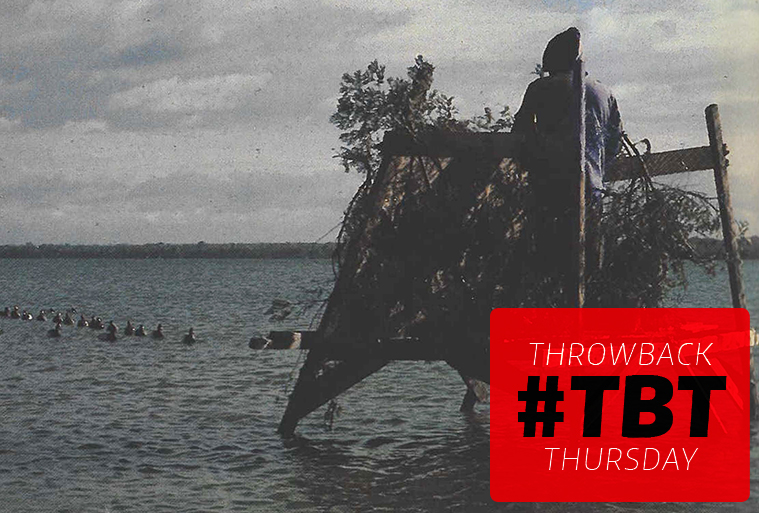
It’s 4 a.m. and you are stumbling groggily about the dark bedroom trying to put on your woolies without waking your spouse. You amble downstairs, grab a quick breakfast, gather up the shotgun, the decoys, the shells, and all the other paraphernalia you’ll need. The dog growls as you drag him from his cosy blanket in the corner.
It is mid-October and your first duck hunt is this fall.
You drive 60 miles to a favourite spot, arriving at 5:30. Wearily, you trudge the mile or so from the car to the blind you built last weekend.
By the time you have put the decoys in place, dawn is just beginning to break.
It’s just cool enough to keep away the bugs. No rainclouds in sight — in fact, you can still see stars overhead. The wind is calm. A glorious autumn day, you think. You take a deep breath, in anticipation of what is to happen. In your mind’s eye, you form images of low-flying birds, setting into the blocks. You smile to yourself. It will be a great day.
Refusing to budge
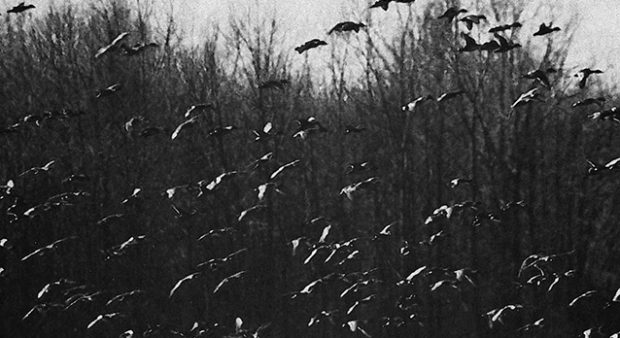
A few minutes later, the light is upon you. Out in the open water, about a mile offshore, you can see rafts of hundreds of scaup and whistlers. There are a few mallards among them.
There they are — and there they stay, all morning! They refuse to budge. Oh, sure, sometimes a few fly up, move in a large circle, then settle down again. You conclude that something must be wrong with your set-up. But it’s not that at all.
It is just that some days are plain lousy for duck hunting. The birds do not behave the way they are supposed to. They are the days on which a duck hunter might just as well stay home and rake leaves or wash the car.
Bluebird weather, explained
Some people call it “bluebird weather” … whatever it is called, it accounts for the 50% of all Ontario duck hunters who are completely unsuccessful on any given day — and the 25% on top of them who take only one bird.
Wouldn’t it be nice to be able to predict which days would be productive? The notion is not as far-fetched as it might seem.
A few years ago, when I was investigating the effects of weather on waterfowl migration, it became clear that migration always occurred under certain specific weather conditions. Even non-migratory activity, including flights to and from feeding areas, peaked under the same conditions.
As a general rule, ducks are extremely inactive under certain weather conditions, and very active under others.
Migration onerous
The reason for this relationship between activity and weather is related to energy. Migration is an onerous process, involving sustained flight for hundreds, or even thousands, of miles at a time. The energy required by flight muscles is therefore much greater than under normal conditions.
Most ducks, especially during fall migration, also undergo a continuous moult during which feathers are shed and replaced. Because feather replacement is also an energy consuming procedure, the energy requirement of waterfowl during the fall is elevated well above normal.
Thus, extraneous energy-requiring actions not related to feeding or actual migratory flight are avoided.
That is not to say that other flight activities never occur during that critical period. Among species of diving ducks, for instance, periodic ‘boiling up’ of rafting birds and erratic movement of small flocks for no apparent reason occur. But there is even a correlation between the frequency of these seemingly nonessential activities and weather conditions.
It is this intensity which also, to a large degree, determines hunter success. It controls the number of birds that present themselves over decoys.
Feed key factor
The energy available for use by ducks depends upon the quantity and quality of food they consume. The quantity depends in turn on the degree to which feeding birds are not harassed by hunters and other disruptions. The quality depends on the relative proportion of proteins and other metabolites in each species of plant or animal consumed. To a certain extent, increased quantity can compensate decreased quality, and vice versa.
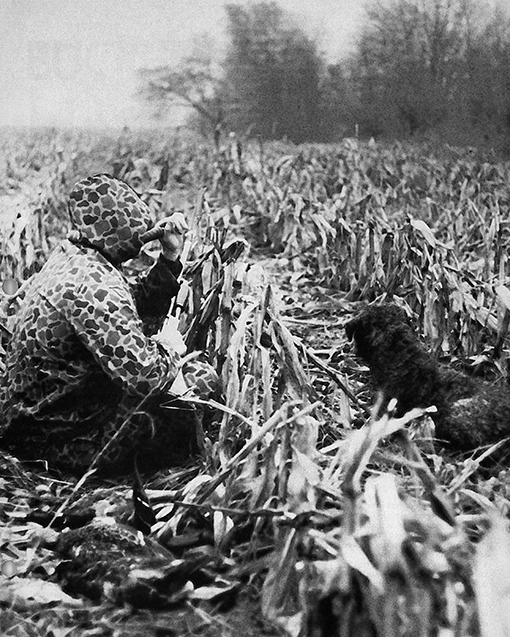
Ducks cannot feed all the time; feeding itself consumes energy. There is a delicate balance between the rate at which energy is produced, the energy required and the amount of food taken to generate the energy.
Under normal circumstances, energy required for the performance of one day’s activities is generated by the food consumed that day. However, during migration, large amounts of energy must be stored in preparation for long flights over areas where food might be unavailable for long periods. Therefore, it becomes important to ration time and energy.
In order to do this, in autumn ducks spend more of their time resting and feeding. They do not fly about so much, and when they do so, it is under conditions which are appropriate.
Barometer down, flights up
Generally, duck flight activity is greatest when barometric pressure is falling, since such a condition indicates the approach of a low-pressure cell, or depression, and associated favourable winds.
Whereas it is unlikely that the mere falling of barometric pressure itself influences duck flight activity on its own, it is certain that the resulting wind characteristics play a significant determining role. Furthermore, the direction of the wind is much more important than its velocity.
Birds concerned with conserving energy are often reluctant to fly against even a moderate wind, since to do so would require much more energy than to fly in its direction. In the fall, most migrating ducks fly south or southeast. Thus, to take advantage of wind assistance, virtually all migration occurs when the local wind is northwesterly.
Bird prognostication
Since ducks cannot feed in order to build energy reserves while they are actually in flight, it is necessary for them to be able to predict weather conditions in advance and behave accordingly.
Northwesterly winds are usually associated with “cold frontal passages.” These are characteristic events found in association with the western edge of low-pressure cells. In the northern hemisphere, weather determinants in the form of pressure cells move generally east at variable speeds.
Advancing low-pressure cells are preceded by easterly or southeasterly winds, often bringing cloud and rain. They are followed by cold fronts, characterized by northwesterlies.
Favourable winds
The approach of a low-pressure cell signals imminent migration, not as a result of the low pressure itself, but rather owing to the favourable winds which follow. As a result, a variety of energy-producing food items are required by ducks in anticipation. Rest periods are sacrificed and activity around feeding grounds greatly increases. It is for that reason that generations of sportsmen have associated cold, rainy weather with the best duck hunting.
Whether or not the birds actually move out of an area on a particular cold front depends upon the wind direction farther south. Massive depressions stimulate greater migration movements since their cold fronts are more extensive. Migrating birds cannot afford to be stimulated to move with feeble cold fronts since to do so would risk encountering contrary winds a few hundred miles to the south, at locations where it might be inappropriate to stop as a result of poor habitat or lack of water altogether. Pre-migratory preparations occur nonetheless, in advance of each succeeding cold frontal passage.
High-pressure rests
High-pressure areas are irrelevant to migration and general flight activity. They produce clear, calm conditions conducive, among ducks, to rest. Generally, they stimulate little local flight activity.
Weather maps depicting patterns of low and high pressure areas can be obtained from local meteorological offices. Sometimes they are printed in local newspapers or are shown on television. They should be indispensable to the serious duck hunter, for they indicate the mornings on which waterfowlers might just as well stay in bed.
Remember, the arrival of a cell of low pressure in your region will stimulate increased activity of local ducks and the departure of such a cell will signal the appearance of newly arrived birds. Under the influence of a high-pressure area, you would do better to hunt grouse.
Originally appeared in the October 1980 issue of Ontario OUT of DOORS magazine.



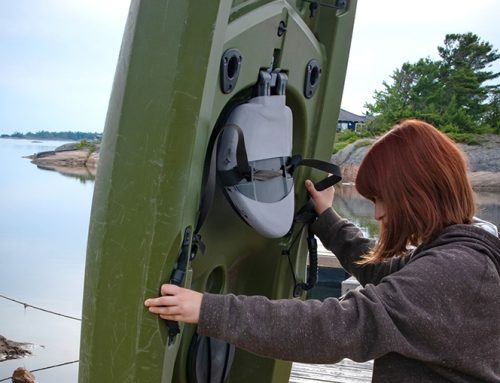

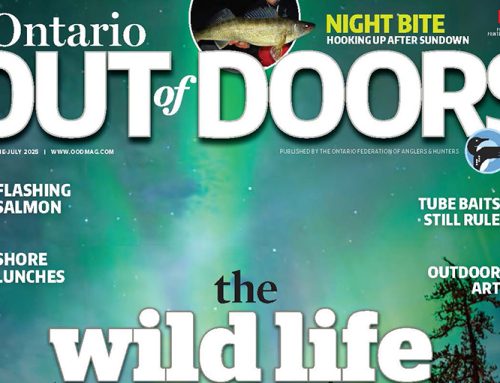
Leave A Comment